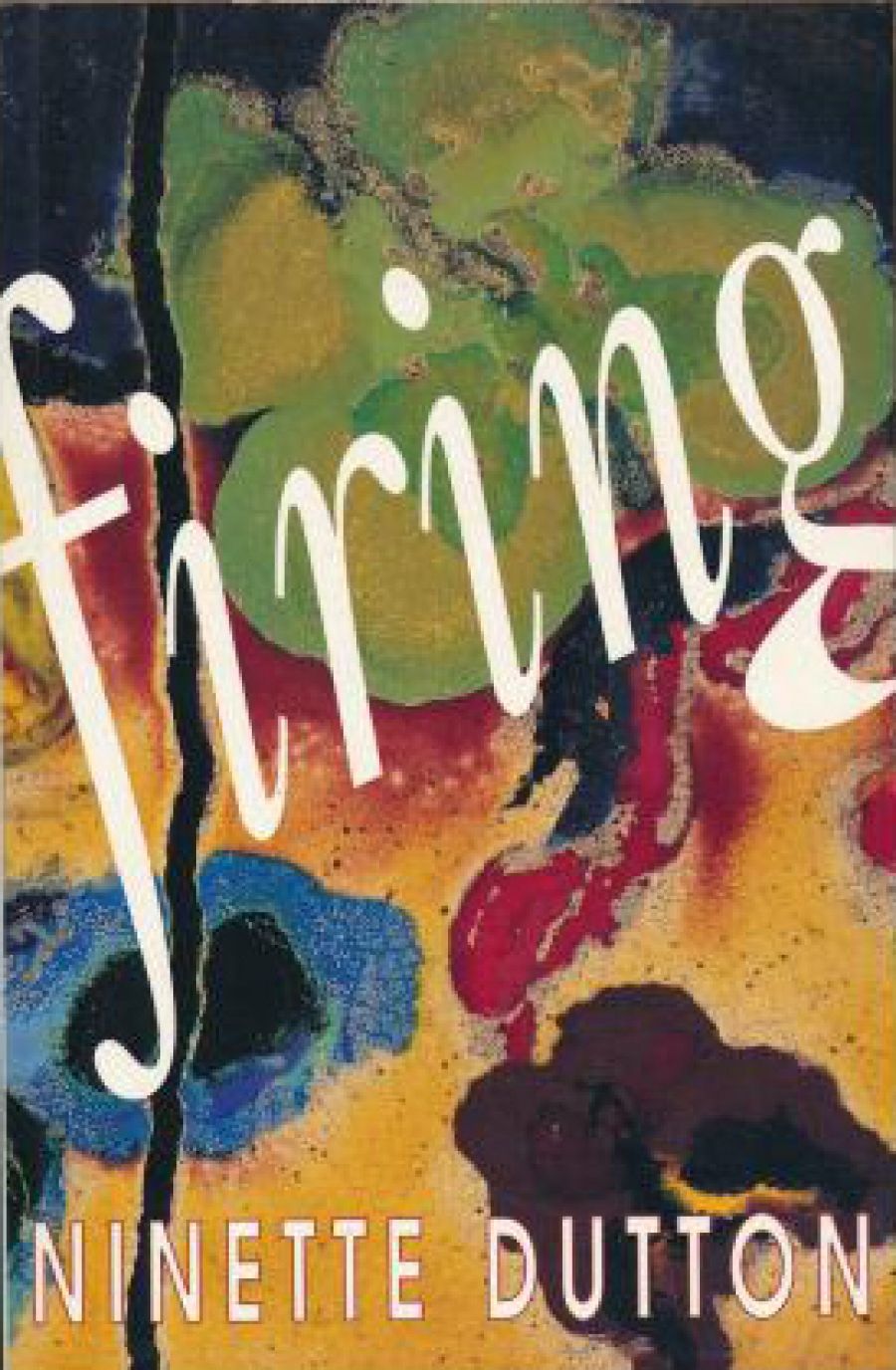
- Free Article: No
- Contents Category: Biography
- Review Article: Yes
- Online Only: No
- Custom Highlight Text:
A friend of mine remembers a reception during an Adelaide Festival of the Arts. It was a large gathering: visiting musicians, singers, actors and writers, members of the Adelaide establishment, people from the university. The hosts were Ninette and Geoffrey Dutton. My friend, a visitor from Sydney, was struck by the Duttons’ confidence and sophistication. They were a handsome couple, she recalls, entirely at ease with the famous people who had come to the Festival from many parts of the world.
- Book 1 Title: Firing
- Book 1 Biblio: Imprint/ETT, $17.95 pb
In Geoffrey’s account of those years, much of the emphasis falls on his public life, on his attempts to promote literature and the arts in a social climate where politicians and bureaucrats were frequently contemptuous of what they regarded often enough as trivial pursuits. In Ninette Dutton’s memoir, Firing, the commitment to Australia is conveyed in a different, though complementary, way. Although she mentions the famous and influential people – in this country, in Europe, and in America – whose paths they crossed, she focuses much more firmly on the natural world. Some of the best pages in this shapeless but engaging book come where she describes the changing tones in the monochrome emptiness of the Nullarbor, the seas surrounding Kangaroo Island, the plants and flowers she nurtured and those she sought out on her journeys in search of elusive wildflowers and rare trees and shrubs.
This is hardly surprising: a respected enameller whose work is displayed in several important locations, she shows a sensitivity to colour unusual among those who decide to commit their lives and experiences to paper. It struck me as I was reading this charming and at times moving book that something of the enameller’s art – the concentration on small, intense patches of colour and luminosity – is reflected in its texture.
She tells her story with a disarming candour. Born as Ninette Trott into a comfortably middle-class Adelaide family, she enjoyed the benefits of a way of life not unusual in the years before World War II. The Trotts did not display the grand tone of the Duttons of Anlaby – and for that reason perhaps Geoffrey presents them, in several rather ungenerous passages in his memoir, as arrivistes. From the pages of Ninette’s book her parents emerge as a conventional, perhaps a trifle straight-laced and essentially Edwardian couple. By the time Ninette met Geoffrey, the Trotts seemed to have established themselves in a large house, but her memories of the earlier part of her life suggest a more modest, not at all pretentious way of life. One memorable image captures Mrs Trott as she is cooking chops on an improvised grill outside the back door.
Geoffrey and Ninette became engaged in 1943, and soon after the war set off for Oxford where Geoffrey read English. So began a life they shared for many years, which took them all over the world, but constantly brought them back to South Australia, to Adelaide, and to Anlaby, the Duttons’ pastoral property where Ninette and Geoffrey lived and played hosts to the famous and the influential. Many of those figures make fleeting appearances in Firing, though that enameller’s eye, with its concentration on detail, prevents Ninette from capturing them as fully as they are caught by Geoffrey in Out in the Open. For instance, those interested in the Duttons’ version, so to speak, of the friendship and quarrel with Patrick White will find much more analysis in Geoffrey’s book. In Ninette’s there is, perhaps, greater sensitivity: I was moved by her account of a trip she made to Sydney during the last months of White’s life, when she was tormenting herself by wondering whether she should try to get in touch with him.
There are times, of course, when one could wish for more analysis, for a more coherent structure to these reminiscences. Yet even the flaws in Firing reveal an attractive personality. On several occasions the narrative shoots off at potentially alarming tangents. These tend to occur where an image conjures associations from very different places and times. The habit is at times disconcerting: more intrusive editing might have made the transitions smoother. Yet it accounts for a good deal of the book’s appeal: Firing resembles, the conviction grew on me, some of Ninette’s enamels, where colours and textures flow into each other in an apparently haphazard though pleasing fashion.
Above all, I was struck by the book’s generosity. Despite its random construction, despite its reluctance to probe the complexity of human nature, there is a most attractive enthusiasm for people: Ninette obviously enjoys and treasures her friends. Her account of a trip to the outback with Bruce Chatwin in 1986 conveys a nice character-sketch of that noted writer. And she displays, besides, generosity of a more demanding kind in her comment about the end of her marriage: ‘Sometimes insensitive people try to please me by saying disagreeable things about Geoff. I will not tolerate this. To do so is to tarnish a wonderful love affair of forty years.’


Comments powered by CComment